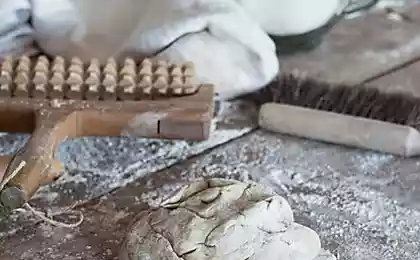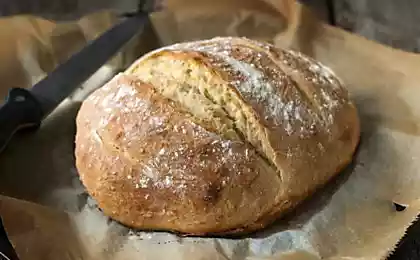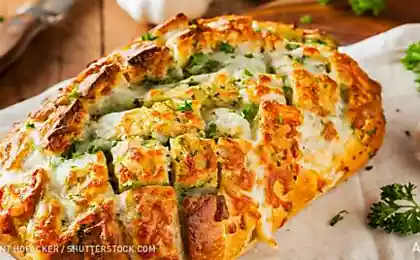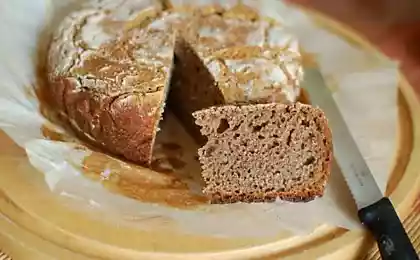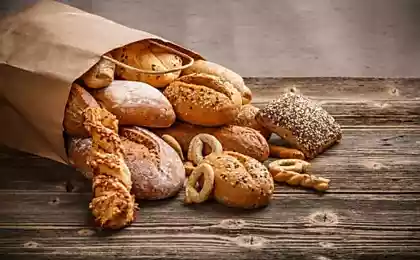135
How to bake rye bread on leaven
Pumpernickel (German: Pumpernickel) is popular in Germany. rye-breadSince the late Middle Ages, it has been valued for its positive effect on the digestive process.
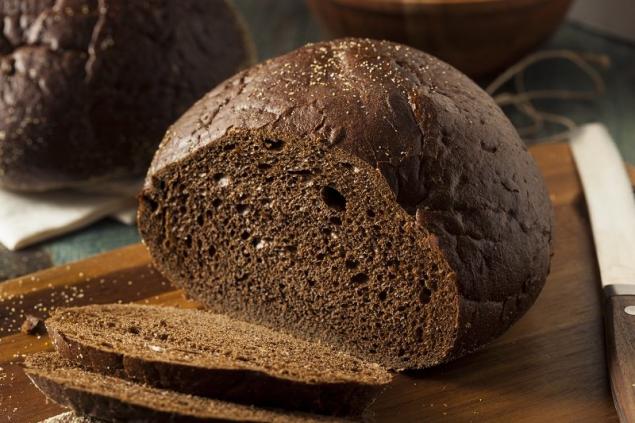
The original Pumpernickel is still produced in an ancient German bakery located in the city of Zost (North Rhine-Westphalia). The bakery, by the way, was founded in 1570 by master Jörgen Haverlant, and to this day it is managed by his descendants.

Traditionally, this type of bread is baked for 8-16 hours in a slowly cooling oven. During this time, black beet molasses, which is part of the ingredients, or rather the sugar in it, caramelizes and, together with starter, gives bread a unique aroma and a rich dark color.
Rye bread on leaven Ingredients for opar
Test ingredients
Preparation
It turns out good-quality rye bread, tasty, aromatic, quite dense, but at the same time slightly porous, with a sweetish taste characteristic of this variety.
Earlier we told how to bake homemade Karelian bread according to the recipe of 1950. Such bread contains 5 times more fiber than wheat flour bread of the highest grade. It is rich in vitamins and minerals, less calories, and therefore is a real find for everyone who adheres to a diet.

The original Pumpernickel is still produced in an ancient German bakery located in the city of Zost (North Rhine-Westphalia). The bakery, by the way, was founded in 1570 by master Jörgen Haverlant, and to this day it is managed by his descendants.

Traditionally, this type of bread is baked for 8-16 hours in a slowly cooling oven. During this time, black beet molasses, which is part of the ingredients, or rather the sugar in it, caramelizes and, together with starter, gives bread a unique aroma and a rich dark color.
Rye bread on leaven Ingredients for opar
- 20g wheat starter
- 200g rye whole grain flour
- 200 ml of water
Test ingredients
- 400g opar
- 350g wholegrain flour
- 100 ml of water
- 100 ml maltose molasses
- 8g salt
Preparation
- In the evening, mix in a bowl sourdough, rye whole grain flour and water.

- Cover the steam with a film and leave for ripening at room temperature for 15 hours.
- The next day, add 100 milliliters of water to the pool, stir and send the diluted vapor to the dough tank.
- Add the flour, salt and molasses. Take 1-2 minutes in the test. Then manually roll into the collar.

- Cover the dough with film and leave alone for 30 minutes.
- Place the viscous dough on the working surface sprinkled with flour.
- With your hands dipped in water, give the rye dough a shape suitable for the form at your disposal for baking bread.
- Lubricate the form with vegetable oil, sprinkle with flour, place dough in it and carefully level its surface.

- Cover the dough with film and leave at room temperature until it rises almost level with the edges of the shape.

- Cover the shape. Before sending it to the oven, put on the bottom shelf a container with 500 milliliters of hot water. This will protect the bread from drying out.
- Bake bread for 1 hour at 190 degrees, and then another 4 hours at 100 degrees.

- Turn off the oven and let it cool completely with the bread inside.

- "Pumpernickel" on leaven ready.
- Bon appetit!
It turns out good-quality rye bread, tasty, aromatic, quite dense, but at the same time slightly porous, with a sweetish taste characteristic of this variety.
Earlier we told how to bake homemade Karelian bread according to the recipe of 1950. Such bread contains 5 times more fiber than wheat flour bread of the highest grade. It is rich in vitamins and minerals, less calories, and therefore is a real find for everyone who adheres to a diet.






